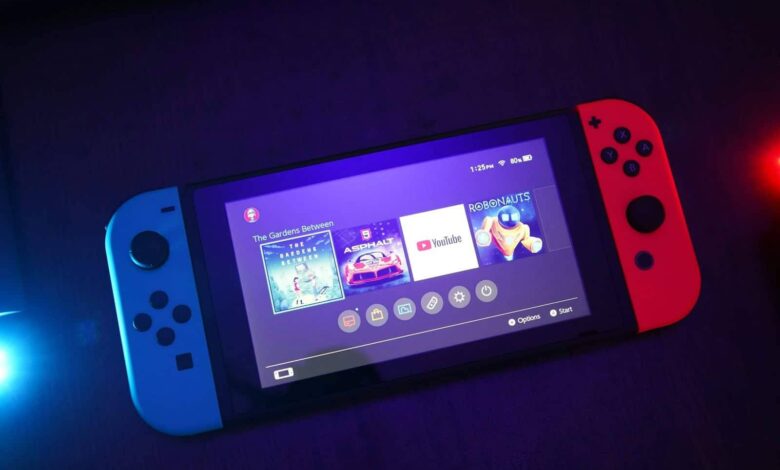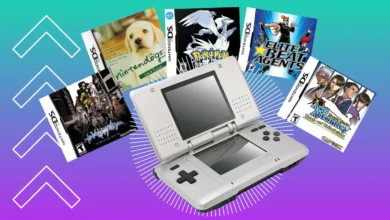Nintendo DS: A Comprehensive Guide to the Iconic Handheld Console

The Nintendo DS is one of the most influential and best-selling handheld consoles of all time. Released in 2004, the Nintendo DS introduced groundbreaking features such as dual screens, touchscreen functionality, and wireless connectivity, which significantly reshaped the landscape of portable gaming. In this article, we will provide an in-depth exploration of the Nintendo DS, covering its history, key features, hardware specifications, popular games, and its lasting impact on the gaming industry.
History of the Nintendo DS
The Nintendo DS was officially announced by Nintendo in early 2004 and released later that year in North America and Japan. Its development was rooted in Nintendo’s desire to innovate beyond traditional gaming consoles. The “DS” stands for “Dual Screen,” highlighting its defining feature of two vertically stacked screens.
Development and Launch
Nintendo’s success with the Game Boy line of handheld consoles laid the foundation for the development of the Nintendo DS. The DS was initially viewed with skepticism due to its unconventional design and touchscreen interface. However, the system quickly gained traction, and strong initial sales cemented its place in gaming history.
Market Reception
Upon its release, the Nintendo DS faced competition from Sony’s PlayStation Portable (PSP). Despite the PSP’s superior graphics and multimedia capabilities, the DS’s unique dual-screen format and touchscreen functionality attracted a broad audience. By the end of its lifecycle, the Nintendo DS had sold over 154 million units worldwide, making it one of the best-selling video game systems ever.
Key Features of the Nintendo DS
The Nintendo DS introduced several innovative features that distinguished it from other handheld consoles of its time.
1. Dual Screens
The most defining feature of the Nintendo DS is its dual-screen setup. The top screen functions as a traditional display, while the bottom screen is a touchscreen that allows players to interact directly with the game using a stylus or their fingers.
2. Touchscreen Interface
The touchscreen on the bottom display was a major innovation. It allowed developers to create new types of gameplay, such as drawing paths, solving puzzles, and using tactile feedback to control in-game actions.
3. Wireless Connectivity
The Nintendo DS featured built-in Wi-Fi capabilities, enabling players to connect wirelessly for multiplayer gaming and online services. Games like Mario Kart DS and Animal Crossing: Wild World took full advantage of this feature, creating vibrant online communities.
4. Backward Compatibility
One of the key advantages of the DS was its ability to play Game Boy Advance (GBA) games via a secondary cartridge slot. This ensured that players transitioning from the GBA could still enjoy their existing game libraries.
5. PictoChat
The DS included PictoChat, a built-in messaging service that allowed users within a certain range to exchange text and drawings using the stylus and touchscreen.
Nintendo DS Hardware Specifications
The Nintendo DS was built with robust hardware that provided a balance of performance and battery efficiency.
Processor and Memory
- Processor: ARM9 (67 MHz) + ARM7 (33 MHz)
- RAM: 4 MB
- VRAM: 656 KB
Display
- Top Screen: 3-inch LCD, 256 x 192 resolution
- Bottom Screen: 3-inch LCD touchscreen, 256 x 192 resolution
Audio
- Stereo speakers with support for surround sound (when using headphones)
Battery Life
- 10 hours of playtime on a full charge
- Rechargeable lithium-ion battery
Cartridge Slot
- Slot 1: DS Game Cards
- Slot 2: Game Boy Advance cartridges
Popular Nintendo DS Games
The Nintendo DS hosted a diverse and expansive library of games, catering to a wide range of player preferences.
1. Pokémon Series
Games like Pokémon Diamond, Pokémon Pearl, and Pokémon Platinum were major system sellers. These games introduced new gameplay mechanics and connectivity features, allowing players to trade and battle online.
2. Mario Kart DS
One of the best-selling DS games, Mario Kart DS brought the beloved kart racing franchise to handheld gamers. Its online multiplayer mode was particularly groundbreaking.
3. New Super Mario Bros.
This game revitalized the 2D platforming genre, combining classic gameplay with new graphics and mechanics.
4. Animal Crossing: Wild World
The DS version of Animal Crossing allowed players to engage with a dynamic, real-time world. Its Wi-Fi connectivity enabled players to visit each other’s towns and trade items.
5. The Legend of Zelda: Phantom Hourglass
This game leveraged the touchscreen controls in innovative ways, including drawing routes for Link’s boat and solving puzzles.
6. Brain Age: Train Your Brain in Minutes a Day!
Brain Age was designed to engage players with quick mental exercises. Its success helped broaden the DS’s appeal to older audiences.

Nintendo DS Models and Variations
The Nintendo DS underwent several revisions during its lifespan, each improving upon the original design.
1. Nintendo DS Lite
Released in 2006, the DS Lite featured a slimmer, lighter design and brighter screens. It became one of the most popular versions of the DS.
2. Nintendo DSi
Introduced in 2008, the DSi added new features such as an external camera, enhanced audio capabilities, and the ability to download games from the DSi Shop.
3. Nintendo DSi XL
Launched in 2009, the DSi XL featured larger screens and a more comfortable grip, catering to players who preferred a bigger display.
Impact on the Gaming Industry
The Nintendo DS’s success had a profound influence on both handheld and console gaming.
1. Expansion of Casual Gaming
The DS’s intuitive touchscreen and diverse game library attracted non-traditional gamers, expanding the overall gaming demographic.
2. Rise of Dual-Screen and Touch Controls
Many of the DS’s design elements, such as touchscreen interaction and dual screens, influenced future gaming consoles, including the Nintendo 3DS and even mobile devices.
3. Popularization of Online Multiplayer
The DS was one of the first handheld consoles to integrate Wi-Fi-based multiplayer, paving the way for more sophisticated online gaming experiences.
Challenges and Controversies
Despite its success, the Nintendo DS faced some challenges during its lifecycle.
1. Piracy Issues
The widespread availability of flash cartridges like the R4 made it easy for users to play pirated games, which affected developers’ revenue streams.
2. Limited Online Infrastructure
The DS’s online services were relatively basic compared to modern standards, with limited matchmaking options and friend codes that complicated the multiplayer experience.
Legacy of the Nintendo DS
The Nintendo DS remains a beloved console among gamers and collectors. Its innovative design and expansive game library have ensured its place in gaming history. The DS’s influence can be seen in modern consoles, especially in terms of touchscreen integration and online connectivity.
Conclusion
The Nintendo DS stands as a testament to Nintendo’s ability to innovate and capture the gaming market. Its dual-screen design, touchscreen functionality, and extensive game library set a new standard for handheld gaming. Even years after its discontinuation, the Nintendo DS remains a cherished part of gaming history, with its games and features still influencing modern gaming technology.



